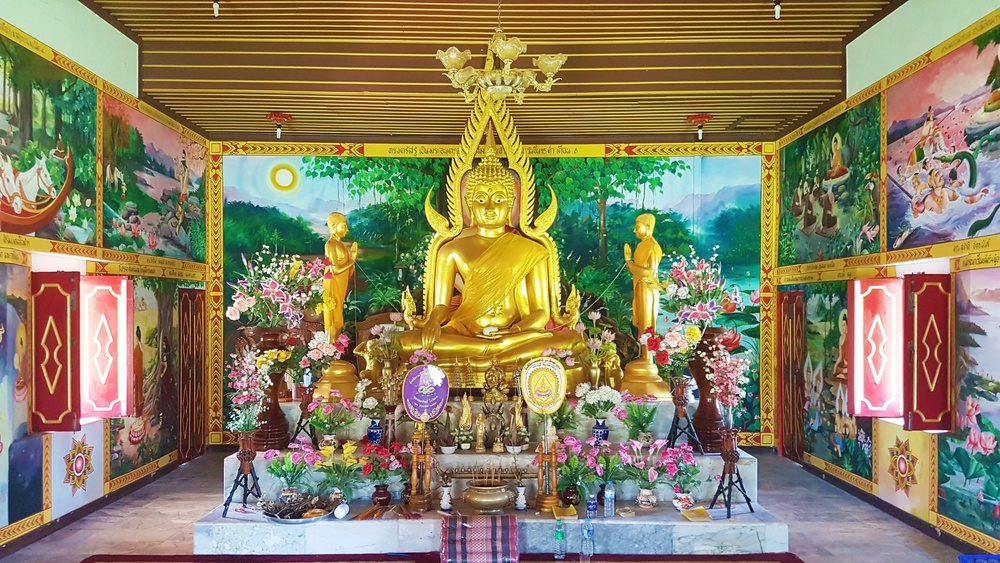Unveiling India’s Spiritual Heritage: Most Famous Buddhist Monasteries Across the Country
India, the cradle of Buddhism, is a land steeped in spiritual richness, where ancient teachings echo through prayer flags fluttering in the mountain wind and chants resonate in the serene halls of age-old monasteries. The country’s diverse regions are home to some of the most revered Buddhist monasteries in India, each a living testament to the enduring legacy of the Buddha’s message of peace, compassion, and enlightenment.
From the Himalayan foothills to the southern plains, these monasteries are not just places of worship—they are spiritual sanctuaries, architectural marvels, and cultural landmarks that attract monks, pilgrims, scholars, and travelers alike. In this article, we explore some of the most famous Buddhist monasteries across the country, offering a glimpse into India’s rich spiritual heritage.
1. Tawang Monastery, Arunachal Pradesh
Perched at over 10,000 feet in the Tawang Valley, Tawang Monastery is the largest in India and a cornerstone of the Gelug school of Tibetan Buddhism. Established in the 17th century, it houses a vast collection of ancient scriptures, thangkas, and a majestic 8-meter statue of Lord Buddha. Its location offers not only spiritual depth but also stunning views of the surrounding mountains.
2. Hemis Monastery, Ladakh
Hidden in the barren yet beautiful landscapes of Ladakh, Hemis Monastery is one of the most renowned Buddhist monasteries in India. Known for its vibrant Hemis Festival held in June, the monastery celebrates the life and teachings of Guru Padmasambhava. The monastery complex features rich murals, sacred relics, and a peaceful environment ideal for meditation and learning.
3. Rumtek Monastery, Sikkim
Rumtek Monastery, near Gangtok, is the seat of the Karmapa, the head of the Karma Kagyu lineage. With its intricate traditional Tibetan architecture, golden stupa, and spiritual ambiance, Rumtek serves as a major center for Buddhist studies and rituals. It is one of the most visited monasteries in the northeast.
4. Namdroling Monastery, Karnataka
Often called the Golden Temple, Namdroling Monastery in Bylakuppe is the largest teaching center of the Nyingma lineage of Tibetan Buddhism outside Tibet. Its impressive golden statues, colorful frescoes, and large prayer halls make it a hub of Buddhist education and devotion. The monastery also houses thousands of monks and nuns.
5. Ghoom Monastery, West Bengal
Located just outside Darjeeling, Ghoom Monastery (Yiga Choeling) is one of the oldest Tibetan monasteries in India. Established in the mid-19th century, it is famous for its 15-foot statue of Maitreya Buddha and ancient manuscripts. The monastery’s quiet charm and the cool mountain climate make it a perfect spiritual retreat.
6. Mindrolling Monastery, Dehradun, Uttarakhand
Established in 1965, Mindrolling Monastery is a major center of the Nyingma school. It is known for the Great Stupa, one of the tallest in Asia, and its expansive garden, library, and monastic college. It is both a tourist attraction and a serious institute for Buddhist studies.
7. Tashi Lhunpo Monastery, Karnataka
A replica of the original monastery in Tibet, Tashi Lhunpo was established in Bylakuppe by the Tibetan community in exile. It serves as the seat of the Panchen Lama and features magnificent statues, detailed wall paintings, and a peaceful courtyard. The monastery plays a vital role in preserving Tibetan Buddhist heritage in India.
8. Mahabodhi Temple Complex, Bodh Gaya, Bihar
Though technically not a monastery, the Mahabodhi Temple is one of the holiest pilgrimage sites for Buddhists worldwide. It marks the spot where Siddhartha Gautama attained enlightenment under the Bodhi tree. The temple is surrounded by monasteries built by Buddhist communities from around the world, including Thailand, Bhutan, Japan, and Vietnam—each offering unique architectural styles and traditions.
9. Key Monastery, Himachal Pradesh
Located at over 13,000 feet in Spiti Valley, Key Monastery is one of the most picturesque Buddhist monasteries in India. This fortress-like monastery is a treasure trove of ancient scrolls, paintings, and murals. It also serves as a training center for lamas and welcomes travelers seeking solitude and spiritual insight.
10. Sanchi Stupa Complex, Madhya Pradesh
While not a functioning monastery today, the Sanchi Stupa complex is one of the oldest and most significant Buddhist sites in India. Commissioned by Emperor Ashoka in the 3rd century BCE, the complex includes stupas, temples, and monasteries that are UNESCO World Heritage Sites. It’s a must-visit for anyone interested in the roots of Buddhism.
Embracing India’s Spiritual Legacy
Visiting these Buddhist monasteries in India offers more than just sightseeing—it provides a chance to connect with timeless wisdom, immerse in peaceful surroundings, and learn about diverse Buddhist traditions. The calming energy of chanting monks, fluttering prayer flags, and incense-filled air creates an environment where inner peace feels tangible.
These sacred sites continue to thrive as centers of learning, meditation, and cultural exchange, keeping alive India’s deep-rooted spiritual legacy. Whether you’re on a pilgrimage, a quest for mindfulness, or simply exploring India’s cultural diversity, these monasteries promise an experience that touches the soul.
Travel Tips for Visiting Buddhist Monasteries
- Dress modestly and respect local customs
- Maintain silence in prayer halls and during rituals
- Avoid interrupting monks during prayer or meditation
- Check festival dates for a richer cultural experience
- Seek permission before photography, especially indoors
Final Thoughts
India’s Buddhist monasteries are not just relics of the past—they are vibrant, living institutions where spirituality flourishes and traditions endure. They offer a profound sense of peace in today’s fast-paced world and invite every visitor to slow down, breathe deeply, and reflect.
So, as you plan your next journey, consider walking the quiet paths of these ancient monasteries. You might just find more than stunning architecture—you may discover a little more of yourself.


